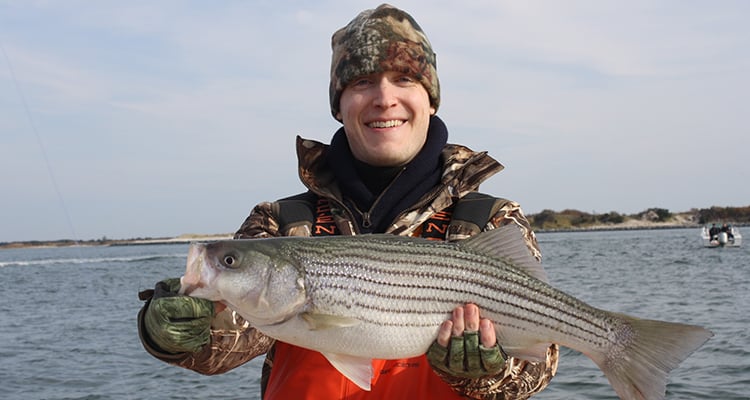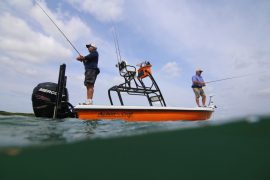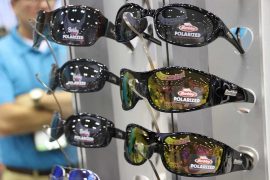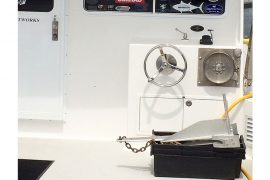
Find and catch the first stripers of the season with these three proven tactics.
It was a blustery March afternoon when we set out to find our first stripers of the season. As I cut across the bay, the damp, cool air, full of the familiar scents of salt marsh, baitfish and ocean, was already curing my cabin fever.
As the tide began to turn, we got into position and set out a chum slick of clam baits. As the current wafted the scent over a nearby flat, a striper that had been hunting there began following the trail of clam bits to the boat, looking for an easy meal.

When the current increased, the bite slowed, and we noticed some birds working in an area where the current had yet to peak. We cruised over, and threw plugs and soft plastics to small schoolie bass that were feeding on grass shrimp and spearing on the edge of a creek channel. It was early-spring striper fishing at its finest, and a great way to start the season.
Early-season bass are generally made up of both resident fish that spent the winter in local bays and rivers and migratory fish from the Chesapeake Bay. Since the ocean temperatures are cold at the start of the season, the sun-warmed bays, flats, and channels hold most of the spring’s first stripers.
Successful early-season fishing hinges on finding the warmest water temperatures in the area. Mud flats tend to be more productive than sandy bottom areas as the dark-colored bottoms absorb more heat from the sun, thereby warming the surrounding water. On a late-afternoon outgoing tide, the water that has been warmed over the darker bottoms during the day is drawn back by the ebbing current. The outgoing current also drains young-of-the-year baitfish into feeding zones, and this, combined with the spike in water temperature, puts gamefish on the hunt.
Power plants also provide unique feeding habitat with their warm-water outflows. Any consistent warm-water discharge will hold bluefish, striped bass, and weakfish, making them a good place to look for early-season action.
Chumming Clams
Bass are lethargic during the early spring and look for food that is easily obtained and digested which makes clams a deadly early-season bait. Clams make an easy meal for spring stripers and are a great bait for anglers to open their fishing season.
Stripers will station themselves on the down-tide side of lumps or other structure, allowing for easy pickings of baitfish caught in the current. Anchoring up-current of these locations and chumming with “clam soup” will pique the interest of any stripers waiting in ambush, and a hunk of clam drifting with the current will prove irresistible.

Water temperature, current speed, and water clarity all affect how well the stripers will bite, but when the conditions are right, the action on clams can be nonstop for a good portion of the tide.
Bass generally feed more heavily on an outgoing tide, but as the current increases, it tends to stir up sediment, decreasing the water clarity and causing the baits to foul with weeds. The bite will change throughout the tide, and as it changes, so should your location.
If, while clam chumming, you haven’t had a bite in more than 30 minutes, pull anchor and find a new location.
Once the vessel is tight on the anchor, begin ladling out the fresh or frozen clam that you had…





